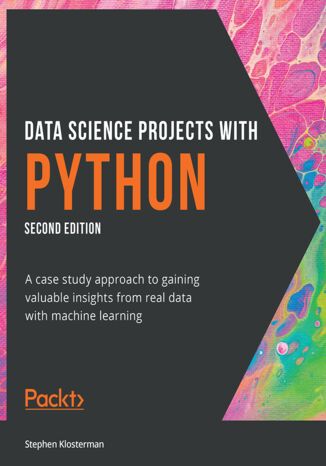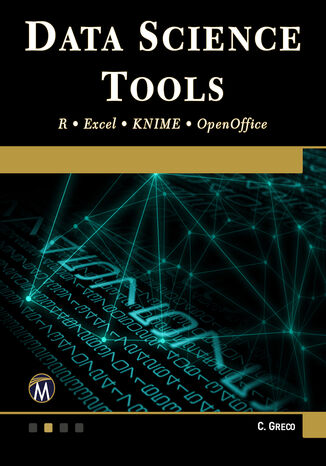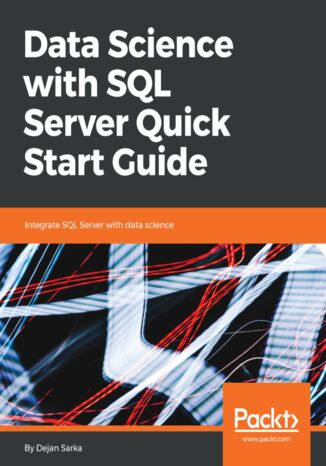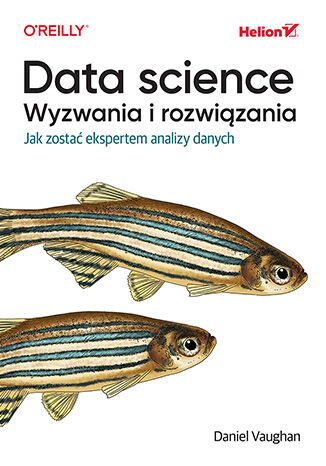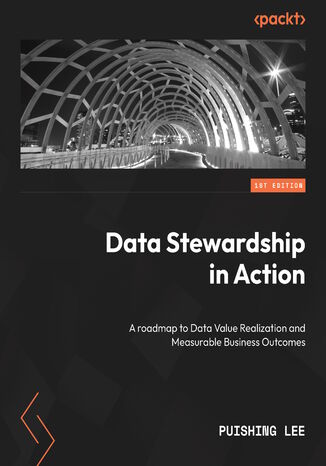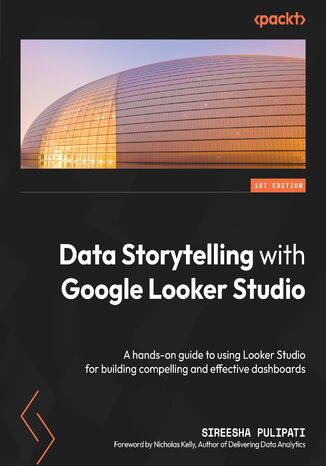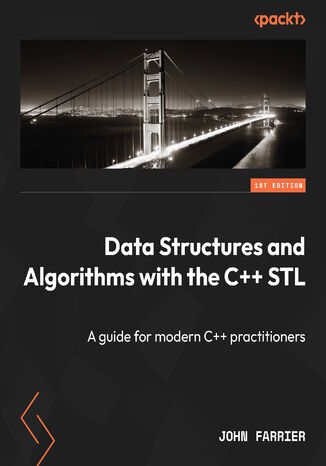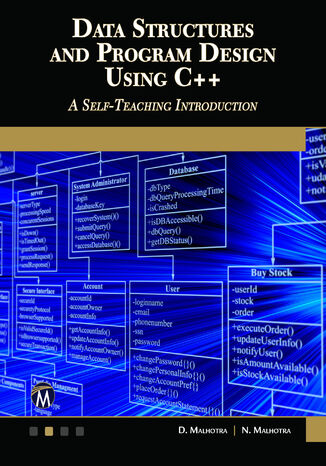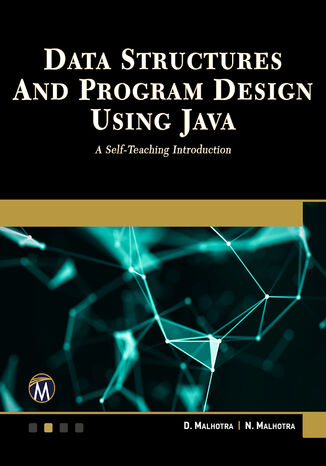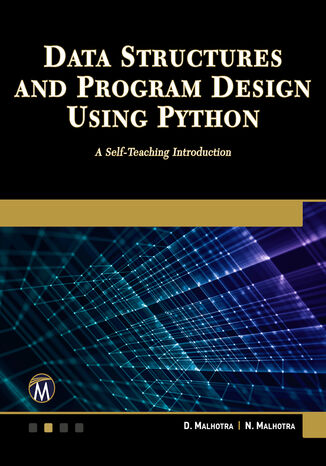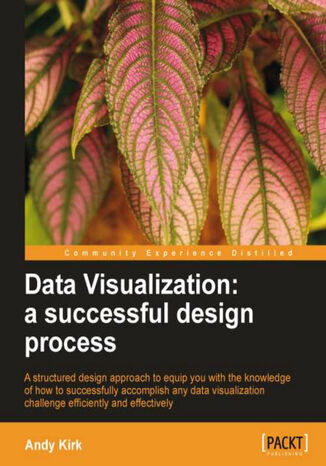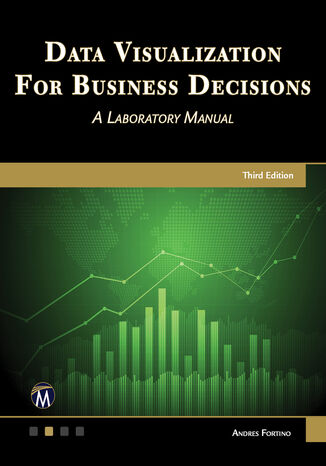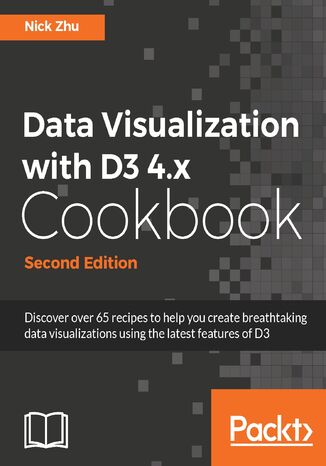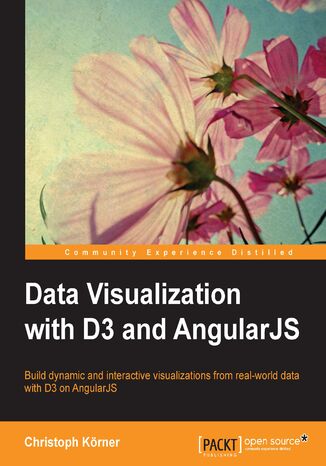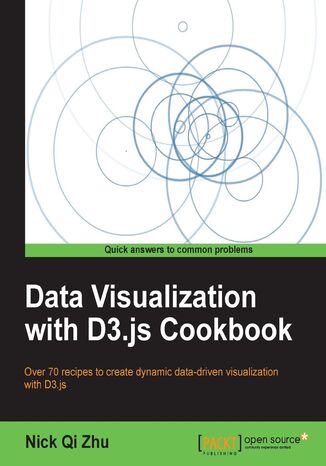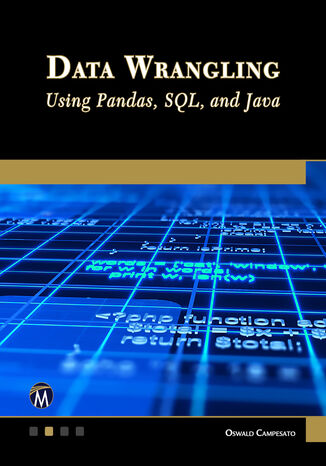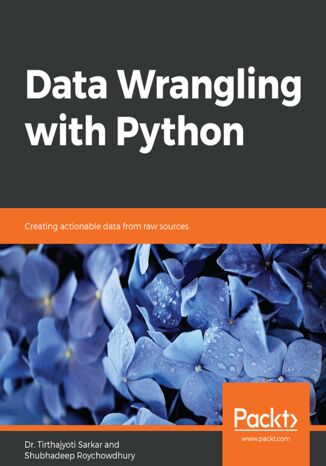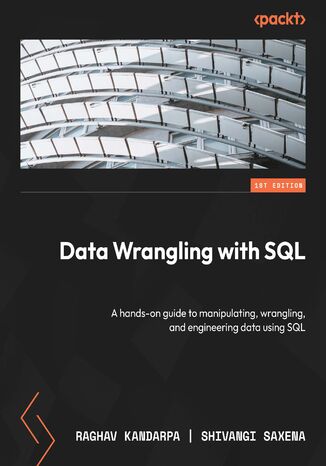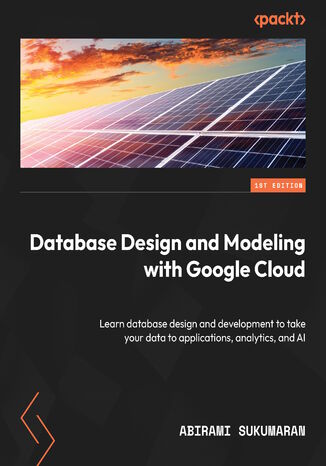Categories
Ebooks
-
Business and economy
- Bitcoin
- Businesswoman
- Coaching
- Controlling
- E-business
- Economy
- Finances
- Stocks and investments
- Personal competence
- Computer in the office
- Communication and negotiation
- Small company
- Marketing
- Motivation
- Multimedia trainings
- Real estate
- Persuasion and NLP
- Taxes
- Social policy
- Guides
- Presentations
- Leadership
- Public Relation
- Reports, analyses
- Secret
- Social Media
- Sales
- Start-up
- Your career
- Management
- Project management
- Human Resources
-
For children
-
For youth
-
Education
-
Encyclopedias, dictionaries
-
E-press
- Architektura i wnętrza
- Health and Safety
- Biznes i Ekonomia
- Home and garden
- E-business
- Ekonomia i finanse
- Esoterecism
- Finances
- Personal finance
- Business
- Photography
- Computer science
- HR & Payroll
- For women
- Computers, Excel
- Accounts
- Culture and literature
- Scientific and academic
- Environmental protection
- Opinion-forming
- Education
- Taxes
- Travelling
- Psychology
- Religion
- Agriculture
- Book and press market
- Transport and Spedition
- Healthand beauty
-
History
-
Computer science
- Office applications
- Data bases
- Bioinformatics
- IT business
- CAD/CAM
- Digital Lifestyle
- DTP
- Electronics
- Digital photography
- Computer graphics
- Games
- Hacking
- Hardware
- IT w ekonomii
- Scientific software package
- School textbooks
- Computer basics
- Programming
- Mobile programming
- Internet servers
- Computer networks
- Start-up
- Operational systems
- Artificial intelligence
- Technology for children
- Webmastering
-
Other
-
Foreign languages
-
Culture and art
-
School reading books
-
Literature
- Antology
- Ballade
- Biographies and autobiographies
- For adults
- Dramas
- Diaries, memoirs, letters
- Epic, epopee
- Essay
- Fantasy and science fiction
- Feuilletons
- Work of fiction
- Humour and satire
- Other
- Classical
- Crime fiction
- Non-fiction
- Fiction
- Mity i legendy
- Nobelists
- Novellas
- Moral
- Okultyzm i magia
- Short stories
- Memoirs
- Travelling
- Narrative poetry
- Poetry
- Politics
- Popular science
- Novel
- Historical novel
- Prose
- Adventure
- Journalism, publicism
- Reportage novels
- Romans i literatura obyczajowa
- Sensational
- Thriller, Horror
- Interviews and memoirs
-
Natural sciences
-
Social sciences
-
School textbooks
-
Popular science and academic
- Archeology
- Bibliotekoznawstwo
- Cinema studies
- Philology
- Polish philology
- Philosophy
- Finanse i bankowość
- Geography
- Economy
- Trade. World economy
- History and archeology
- History of art and architecture
- Cultural studies
- Linguistics
- Literary studies
- Logistics
- Maths
- Medicine
- Humanities
- Pedagogy
- Educational aids
- Popular science
- Other
- Psychology
- Sociology
- Theatre studies
- Theology
- Economic theories and teachings
- Transport i spedycja
- Physical education
- Zarządzanie i marketing
-
Guides
-
Game guides
-
Professional and specialist guides
-
Law
- Health and Safety
- History
- Road Code. Driving license
- Law studies
- Healthcare
- General. Compendium of knowledge
- Academic textbooks
- Other
- Construction and local law
- Civil law
- Financial law
- Economic law
- Economic and trade law
- Criminal law
- Criminal law. Criminal offenses. Criminology
- International law
- International law
- Health care law
- Educational law
- Tax law
- Labor and social security law
- Public, constitutional and administrative law
- Family and Guardianship Code
- agricultural law
- Social law, labour law
- European Union law
- Industry
- Agricultural and environmental
- Dictionaries and encyclopedia
- Public procurement
- Management
-
Tourist guides and travel
- Africa
- Albums
- Southern America
- North and Central America
- Australia, New Zealand, Oceania
- Austria
- Asia
- Balkans
- Middle East
- Bulgary
- China
- Croatia
- The Czech Republic
- Denmark
- Egipt
- Estonia
- Europe
- France
- Mountains
- Greece
- Spain
- Holand
- Iceland
- Lithuania
- Latvia
- Mapy, Plany miast, Atlasy
- Mini travel guides
- Germany
- Norway
- Active travelling
- Poland
- Portugal
- Other
- Przewodniki po hotelach i restauracjach
- Russia
- Romania
- Slovakia
- Slovenia
- Switzerland
- Sweden
- World
- Turkey
- Ukraine
- Hungary
- Great Britain
- Italy
-
Psychology
- Philosophy of life
- Kompetencje psychospołeczne
- Interpersonal communication
- Mindfulness
- General
- Persuasion and NLP
- Academic psychology
- Psychology of soul and mind
- Work psychology
- Relacje i związki
- Parenting and children psychology
- Problem solving
- Intellectual growth
- Secret
- Sexapeal
- Seduction
- Appearance and image
- Philosophy of life
-
Religion
-
Sport, fitness, diets
-
Technology and mechanics
Audiobooks
-
Business and economy
- Bitcoin
- Businesswoman
- Coaching
- Controlling
- E-business
- Economy
- Finances
- Stocks and investments
- Personal competence
- Communication and negotiation
- Small company
- Marketing
- Motivation
- Real estate
- Persuasion and NLP
- Taxes
- Social policy
- Guides
- Presentations
- Leadership
- Public Relation
- Secret
- Social Media
- Sales
- Start-up
- Your career
- Management
- Project management
- Human Resources
-
For children
-
For youth
-
Education
-
Encyclopedias, dictionaries
-
E-press
-
History
-
Computer science
-
Other
-
Foreign languages
-
Culture and art
-
School reading books
-
Literature
- Antology
- Ballade
- Biographies and autobiographies
- For adults
- Dramas
- Diaries, memoirs, letters
- Epic, epopee
- Essay
- Fantasy and science fiction
- Feuilletons
- Work of fiction
- Humour and satire
- Other
- Classical
- Crime fiction
- Non-fiction
- Fiction
- Mity i legendy
- Nobelists
- Novellas
- Moral
- Okultyzm i magia
- Short stories
- Memoirs
- Travelling
- Poetry
- Politics
- Popular science
- Novel
- Historical novel
- Prose
- Adventure
- Journalism, publicism
- Reportage novels
- Romans i literatura obyczajowa
- Sensational
- Thriller, Horror
- Interviews and memoirs
-
Natural sciences
-
Social sciences
-
Popular science and academic
-
Guides
-
Professional and specialist guides
-
Law
-
Tourist guides and travel
-
Psychology
- Philosophy of life
- Interpersonal communication
- Mindfulness
- General
- Persuasion and NLP
- Academic psychology
- Psychology of soul and mind
- Work psychology
- Relacje i związki
- Parenting and children psychology
- Problem solving
- Intellectual growth
- Secret
- Sexapeal
- Seduction
- Appearance and image
- Philosophy of life
-
Religion
-
Sport, fitness, diets
-
Technology and mechanics
Videocourses
-
Data bases
-
Big Data
-
Biznes, ekonomia i marketing
-
Cybersecurity
-
Data Science
-
DevOps
-
For children
-
Electronics
-
Graphics/Video/CAX
-
Games
-
Microsoft Office
-
Development tools
-
Programming
-
Personal growth
-
Computer networks
-
Operational systems
-
Software testing
-
Mobile devices
-
UX/UI
-
Web development
-
Management
Podcasts
- Ebooks
- Computer science
Computer science
If data is the new oil, then machine learning is the drill. As companies gain access to ever-increasing quantities of raw data, the ability to deliver state-of-the-art predictive models that support business decision-making becomes more and more valuable.In this book, you’ll work on an end-to-end project based around a realistic data set and split up into bite-sized practical exercises. This creates a case-study approach that simulates the working conditions you’ll experience in real-world data science projects.You’ll learn how to use key Python packages, including pandas, Matplotlib, and scikit-learn, and master the process of data exploration and data processing, before moving on to fitting, evaluating, and tuning algorithms such as regularized logistic regression and random forest. Now in its second edition, this book will take you through the end-to-end process of exploring data and delivering machine learning models. Updated for 2021, this edition includes brand new content on XGBoost, SHAP values, algorithmic fairness, and the ethical concerns of deploying a model in the real world.By the end of this data science book, you’ll have the skills, understanding, and confidence to build your own machine learning models and gain insights from real data.
Data Science Projects with Python is designed to give you practical guidance on industry-standard data analysis and machine learning tools, by applying them to realistic data problems. You will learn how to use pandas and Matplotlib to critically examine datasets with summary statistics and graphs, and extract the insights you seek to derive. You will build your knowledge as you prepare data using the scikit-learn package and feed it to machine learning algorithms such as regularized logistic regression and random forest. You’ll discover how to tune algorithms to provide the most accurate predictions on new and unseen data. As you progress, you’ll gain insights into the working and output of these algorithms, building your understanding of both the predictive capabilities of the models and why they make these predictions.By then end of this book, you will have the necessary skills to confidently use machine learning algorithms to perform detailed data analysis and extract meaningful insights from unstructured data.
Mercury Learning and Information, Christopher Greco
This book introduces popular data science tools and guides readers on how to use them effectively. It covers data analysis using Microsoft Excel, KNIME, R, and OpenOffice, applying statistical concepts such as confidence intervals, normal distribution, T-Tests, linear regression, histograms, and geographic analysis with real data from Federal Government sources.The course begins with the basics, including importing data and conducting various statistical tests. It progresses to specific methods for each tool, ensuring a comprehensive understanding of data analysis. Capstone exercises provide hands-on experience, reinforcing the concepts learned throughout the book.Understanding these tools and concepts is crucial for effective data analysis. This book takes readers from the basics to advanced statistical methods, combining theoretical insights with practical applications. Companion files with source code and data sets enhance the learning experience, making this book an essential resource for mastering data analysis with popular software applications.
As the fields of data science, machine learning, and artificial intelligence rapidly evolve, .NET developers are eager to leverage their expertise to dive into these exciting domains but are often unsure of how to do so. Data Science in .NET with Polyglot Notebooks is the practical guide you need to seamlessly bring your .NET skills into the world of analytics and AI. With Microsoft’s .NET platform now robustly supporting machine learning and AI tasks, the introduction of tools such as .NET Interactive kernels and Polyglot Notebooks has opened up a world of possibilities for .NET developers. This book empowers you to harness the full potential of these cutting-edge technologies, guiding you through hands-on experiments that illustrate key concepts and principles. Through a series of interactive notebooks, you’ll not only master technical processes but also discover how to integrate these new skills into your current role or pivot to exciting opportunities in the data science field. By the end of the book, you’ll have acquired the necessary knowledge and confidence to apply cutting-edge data science techniques and deliver impactful solutions within the .NET ecosystem.
Data Science with SQL Server Quick Start Guide. Integrate SQL Server with data science
SQL Server only started to fully support data science with its two most recent editions. If you are a professional from both worlds, SQL Server and data science, and interested in using SQL Server and Machine Learning (ML) Services for your projects, then this is the ideal book for you.This book is the ideal introduction to data science with Microsoft SQL Server and In-Database ML Services. It covers all stages of a data science project, from businessand data understanding,through data overview, data preparation, modeling and using algorithms, model evaluation, and deployment.You will learn to use the engines and languages that come with SQL Server, including ML Services with R and Python languages and Transact-SQL. You will also learn how to choose which algorithm to use for which task, and learn the working of each algorithm.
Data science, wyzwania i rozwiązania. Jak zostać ekspertem analizy danych
Uczenie się i praktykowanie danologii nie należy do najłatwiejszych zadań. Edukacja w tej dziedzinie zazwyczaj dotyczy programowania i uczenia maszynowego, a przecież świetny analityk danych musi się znać na wielu innych zagadnieniach. Może się ich nauczyć w pracy, ale w tym celu konieczne jest znalezienie mentora. A to niestety nie zawsze jest możliwe. Ten podręcznik zaczyna się tam, gdzie większość książek się kończy - od rzeczywistych procesów decyzyjnych opartych na wnioskach wynikających z danych. Brett Holleman, niezależny danolog Dzięki tej książce przyswoisz różne techniki, które pomogą Ci stać się bardziej produktywnym analitykiem danych. Najpierw zapoznasz się z tematami związanymi z rozumieniem danych i umiejętnościami miękkimi, które okazują się konieczne w pracy dobrego danologa. Dopiero potem skupisz się na kluczowych aspektach uczenia maszynowego. W ten sposób stopniowo przejdziesz ścieżkę od przeciętnego kandydata do wyjątkowego specjalisty data science. Umiejętności opisane w tym przewodniku przez wiele lat były rozpoznawane, katalogowane, analizowane i stosowane do generowania wartości i szkolenia danologów w różnych firmach i branżach. Z książki dowiesz się: jak sprawić, by procesy oparte na analizie danych generowały wartość jak zaprojektować przydatne wskaźniki jak zdobywać poparcie interesariuszy jak się upewnić, że algorytm uczenia maszynowego nadaje się do rozwiązania danego zadania jak zapanować nad wyciekami danych Oto brakujący podręcznik pozwalający odnieść sukces komercyjny dzięki data science! Adri Purkayastha, dyrektor do spraw zagrożeń związanych z AI, BNP Paribas
Data Stewardship in Action. A roadmap to data value realization and measurable business outcomes
In the competitive data-centric world, mastering data stewardship is not just a requirement—it's the key to organizational success. Unlock strategic excellence with Data Stewardship in Action, your guide to exploring the intricacies of data stewardship and its implementation for maximum efficiency.From business strategy to data strategy, and then to data stewardship, this book shows you how to strategically deploy your workforce, processes, and technology for efficient data processing. You’ll gain mastery over the fundamentals of data stewardship, from understanding the different roles and responsibilities to implementing best practices for data governance. You’ll elevate your data management skills by exploring the technologies and tools for effective data handling. As you progress through the chapters, you’ll realize that this book not only helps you develop the foundational skills to become a successful data steward but also introduces innovative approaches, including leveraging AI and GPT, for enhanced data stewardship.By the end of this book, you’ll be able to build a robust data governance framework by developing policies and procedures, establishing a dedicated data governance team, and creating a data governance roadmap that ensures your organization thrives in the dynamic landscape of data management.
Sireesha Pulipati, Nicholas Kelly
Presenting data visually makes it easier for organizations and individuals to interpret and analyze information. Looker Studio is an easy-to-use, collaborative tool that enables you to transform your data into engaging visualizations. This allows you to build and share dashboards that help monitor key performance indicators, identify patterns, and generate insights to ultimately drive decisions and actions.Data Storytelling with Looker Studio begins by laying out the foundational design principles and guidelines that are essential to creating accurate, effective, and compelling data visualizations. Next, you’ll delve into features and capabilities of Looker Studio – from basic to advanced – and explore their application with examples. The subsequent chapters walk you through building dashboards with a structured three-stage process called the 3D approach using real-world examples that’ll help you understand the various design and implementation considerations. This approach involves determining the objectives and needs of the dashboard, designing its key components and layout, and developing each element of the dashboard.By the end of this book, you will have a solid understanding of the storytelling approach and be able to create data stories of your own using Looker Studio.
Data Structures and Algorithms with the C++ STL. A guide for modern C++ practitioners
While the Standard Template Library (STL) offers a rich set of tools for data structures and algorithms, navigating its intricacies can be daunting for intermediate C++ developers without expert guidance. This book offers a thorough exploration of the STL’s components, covering fundamental data structures, advanced algorithms, and concurrency features.Starting with an in-depth analysis of the std::vector, this book highlights its pivotal role in the STL, progressing toward building your proficiency in utilizing vectors, managing memory, and leveraging iterators. The book then advances to STL’s data structures, including sequence containers, associative containers, and unordered containers, simplifying the concepts of container adaptors and views to enhance your knowledge of modern STL programming. Shifting the focus to STL algorithms, you’ll get to grips with sorting, searching, and transformations and develop the skills to implement and modify algorithms with best practices. Advanced sections cover extending the STL with custom types and algorithms, as well as concurrency features, exception safety, and parallel algorithms.By the end of this book, you’ll have transformed into a proficient STL practitioner ready to tackle real-world challenges and build efficient and scalable C++ applications.
Mercury Learning and Information, D. Malhotra, N. Malhotra
This book introduces the fundamentals of data structures using C++ in a self-teaching format. It covers managing large amounts of information, SEO, and creating Internet/Web indexing services. Practical analogies with real-world applications help explain technical concepts. The book includes end-of-chapter exercises such as programming tasks, theoretical questions, and multiple-choice quizzes.The course starts with an introduction to data structures and the C++ language, progressing through arrays, linked lists, queues, searching and sorting, stacks, trees, multi-way search trees, hashing, files, and graphs. Each chapter builds on the previous one, ensuring a comprehensive understanding of data structures.Understanding these concepts is crucial for managing large databases and optimizing web services. This book guides readers from basic to advanced data structure techniques, blending theoretical knowledge with practical skills. Companion files with source code and data sets enhance the learning experience, making this book an essential resource for mastering data structures with C++.
Mercury Learning and Information, D. Malhotra, N. Malhotra
This book introduces the fundamentals of data structures using Java in a self-teaching format. It covers managing large databases, effective SEO, and creating web indexing services. Real-world analogies help explain technical concepts. Each chapter includes programming tasks, theoretical questions, and multiple-choice quizzes.The course begins with an introduction to data structures and Java, moving through arrays, linked lists, queues, searching and sorting, stacks, trees, multi-way search trees, hashing, files, and graphs. Each chapter builds on the previous one, ensuring a thorough understanding of data structures.Understanding these concepts is crucial for managing information and optimizing web services. This book guides readers from basic to advanced techniques, blending theory with practical skills. It is an essential resource for mastering data structures with Java, enhanced by end-of-chapter exercises and real-world examples.
Mercury Learning and Information, D. Malhotra, N. Malhotra
This book, part of the Pocket Primer series, introduces the basic concepts of data science using Python 3 and other applications. It offers a fast-paced introduction to data analytics, statistics, data visualization, linear algebra, and regular expressions. The book features numerous code samples using Python, NumPy, R, SQL, NoSQL, and Pandas. Companion files with source code and color figures are available.Understanding data science is crucial in today's data-driven world. This book provides a comprehensive introduction, covering key areas such as Python 3, data visualization, and statistical concepts. The practical code samples and hands-on approach make it ideal for beginners and those looking to enhance their skills.The journey begins with working with data, followed by an introduction to probability, statistics, and linear algebra. It then delves into Python, NumPy, Pandas, R, regular expressions, and SQL/NoSQL, concluding with data visualization techniques. This structured approach ensures a solid foundation in data science.
Data Visualization: a successful design process
Do you want to create more attractive charts? Or do you have huge data sets and need to unearth the key insights in a visual manner? Data visualization is the representation and presentation of data, using proven design techniques to bring alive the patterns, stories and key insights locked away.Data Visualization: a Successful Design Process explores the unique fusion of art and science that is data visualization; a discipline for which instinct alone is insufficient for you to succeed in enabling audiences to discover key trends, insights and discoveries from your data. This book will equip you with the key techniques required to overcome contemporary data visualization challenges. You'll discover a proven design methodology that helps you develop invaluable knowledge and practical capabilities.You'll never again settle for a default Excel chart or resort to fancy-looking graphs. You will be able to work from the starting point of acquiring, preparing and familiarizing with your data, right through to concept design. Choose your killer visual representation to engage and inform your audience.Data Visualization: a Successful Design Process will inspire you to relish any visualization project with greater confidence and bullish know-how; turning challenges into exciting design opportunities.
Data Visualization for Business Decisions. Transforming Data into Actionable Insights
Mercury Learning and Information, Andres Fortino
This workbook is for business analysts aiming to enhance their skills in creating data visuals, presentations, and report illustrations to support business decisions. It focuses on developing visualization and analytical skills through qualitative labs. Readers will analyze and describe chart improvements instead of directly modifying them. The course covers eighteen elements across six dimensions: Story, Signs, Purpose, Perception, Method, and Charts.The journey starts with labs and a case study, introducing the analysis tool. It then delves into each dimension, guiding readers through exercises to enhance their understanding and skills. A comprehensive RAIKS survey assesses progress before and after using the text. The workbook concludes with a capstone exercise to review and analyze the final results of the two studied charts.These skills are crucial for effective data communication in business. This workbook transitions readers from basic to advanced visualization techniques, blending theoretical insights with practical skills. Companion files with videos, sample files, and slides enhance learning, making this workbook an essential resource for mastering business data visualization.
Data Visualization: Representing Information on Modern Web. Click here to enter text
Simon Timms, Andy Kirk, Aendrew Rininsland, Swizec Teller
Do you want to create more attractive charts? Or do you have huge data sets and need to unearth the key insights in a visual manner? Data visualization is the representation and presentation of data, using proven design techniques to bring alive the patterns, stories, and key insights that are locked away.This learning path is divided into three modules. The first module will equip you with the key techniques required to overcome contemporary data visualization challenges. In the second module, Social Data Visualization with HTML5 and JavaScript, it teaches you how to leverage HTML5 techniques through JavaScript to build visualizations.In third module, Learning d3.js Data Visualization, will lead you to D3, which has emerged as one of the leading platforms to develop beautiful, interactive visualizations over the web. By the end of this course, you will have unlocked the mystery behind successful data visualizations.This Learning Path combines some of the best that Packt has to offer in one complete, curated package. It includes content from the following Packt products:? Data Visualization: a successful design process by Andy Kirk? Social Data Visualization with HTML5 and JavaScript by Simon Timms? Learning d3.js Data Visualization, Second Edition by Ændrew Rininsland and Swizec Teller
Master D3.js and create amazing visualizations with the Data Visualization with D3 4.x Cookbook. Written by professional data engineer Nick Zhu, this D3.js cookbook features over 65 recipes. ? Solve real-world visualization problems using D3.js practical recipes ? Understand D3 fundamentals ? Includes illustrations, ready-to-go code samples and pre-built chart recipes
D3.js is a JavaScript library designed to display digital data in dynamic graphical form. It helps you bring data to life using HTML, SVG, and CSS. D3 allows great control over the final visual result, and it is the hottest and most powerful web-based data visualization technology on the market today.Data Visualization with D3.js Cookbook is packed with practical recipes to help you learn every aspect of data visualization with D3.Data Visualization with D3.js Cookbook is designed to provide you with all the guidance you need to get to grips with data visualization with D3. With this book, you will create breathtaking data visualization with professional efficiency and precision with the help of practical recipes, illustrations, and code samples.Data Visualization with D3.js Cookbook starts off by touching upon data visualization and D3 basics before gradually taking you through a number of practical recipes covering a wide range of topics you need to know about D3.You will learn the fundamental concepts of data visualization, functional JavaScript, and D3 fundamentals including element selection, data binding, animation, and SVG generation. You will also learn how to leverage more advanced techniques such as custom interpolators, custom tweening, timers, the layout manager, force manipulation, and so on. This book also provides a number of pre-built chart recipes with ready-to-go sample code to help you bootstrap quickly.
Data Wrangling on AWS. Clean and organize complex data for analysis
Navnit Shukla, Sankar M, Sampat Palani
Data wrangling is the process of cleaning, transforming, and organizing raw, messy, or unstructured data into a structured format. It involves processes such as data cleaning, data integration, data transformation, and data enrichment to ensure that the data is accurate, consistent, and suitable for analysis. Data Wrangling on AWS equips you with the knowledge to reap the full potential of AWS data wrangling tools.First, you’ll be introduced to data wrangling on AWS and will be familiarized with data wrangling services available in AWS. You’ll understand how to work with AWS Glue DataBrew, AWS data wrangler, and AWS Sagemaker. Next, you’ll discover other AWS services like Amazon S3, Redshift, Athena, and Quicksight. Additionally, you’ll explore advanced topics such as performing Pandas data operation with AWS data wrangler, optimizing ML data with AWS SageMaker, building the data warehouse with Glue DataBrew, along with security and monitoring aspects.By the end of this book, you’ll be well-equipped to perform data wrangling using AWS services.
Mercury Learning and Information, Oswald Campesato
This book is designed for aspiring data scientists and those involved in data cleaning. It covers features of NumPy and Pandas, along with creating databases and tables in MySQL. It also addresses various data wrangling tasks using Python scripts and awk-based shell scripts. Companion files with code are available from the publisher.Understanding data cleaning and manipulation is vital for data scientists. This book provides a comprehensive introduction to essential tools and techniques. From Python basics to advanced data wrangling, it equips readers with the skills needed to manage and clean data effectively.The journey begins with an introduction to Python and progresses through working with data, Pandas, and SQL. It also covers Java, JSON, XML, and specific data cleaning tasks. The book culminates with detailed data wrangling techniques, ensuring readers gain practical, hands-on experience in data management.
Data Wrangling with Python. Creating actionable data from raw sources
Dr. Tirthajyoti Sarkar, Shubhadeep Roychowdhury
For data to be useful and meaningful, it must be curated and refined. Data Wrangling with Python teaches you the core ideas behind these processes and equips you with knowledge of the most popular tools and techniques in the domain.The book starts with the absolute basics of Python, focusing mainly on data structures. It then delves into the fundamental tools of data wrangling like NumPy and Pandas libraries. You'll explore useful insights into why you should stay away from traditional ways of data cleaning, as done in other languages, and take advantage of the specialized pre-built routines in Python. This combination of Python tips and tricks will also demonstrate how to use the same Python backend and extract/transform data from an array of sources including the Internet, large database vaults, and Excel financial tables. To help you prepare for more challenging scenarios, you'll cover how to handle missing or wrong data, and reformat it based on the requirements from the downstream analytics tool. The book will further help you grasp concepts through real-world examples and datasets.By the end of this book, you will be confident in using a diverse array of sources to extract, clean, transform, and format your data efficiently.
In this information era, where large volumes of data are being generated every day, companies want to get a better grip on it to perform more efficiently than before. This is where skillful data analysts and data scientists come into play, wrangling and exploring data to generate valuable business insights. In order to do that, you’ll need plenty of tools that enable you to extract the most useful knowledge from data.Data Wrangling with R will help you to gain a deep understanding of ways to wrangle and prepare datasets for exploration, analysis, and modeling. This data book enables you to get your data ready for more optimized analyses, develop your first data model, and perform effective data visualization.The book begins by teaching you how to load and explore datasets. Then, you’ll get to grips with the modern concepts and tools of data wrangling. As data wrangling and visualization are intrinsically connected, you’ll go over best practices to plot data and extract insights from it. The chapters are designed in a way to help you learn all about modeling, as you will go through the construction of a data science project from end to end, and become familiar with the built-in RStudio, including an application built with Shiny dashboards.By the end of this book, you’ll have learned how to create your first data model and build an application with Shiny in R.
Data Wrangling with SQL. A hands-on guide to manipulating, wrangling, and engineering data using SQL
Raghav Kandarpa, Shivangi Saxena
The amount of data generated continues to grow rapidly, making it increasingly important for businesses to be able to wrangle this data and understand it quickly and efficiently. Although data wrangling can be challenging, with the right tools and techniques you can efficiently handle enormous amounts of unstructured data.The book starts by introducing you to the basics of SQL, focusing on the core principles and techniques of data wrangling. You’ll then explore advanced SQL concepts like aggregate functions, window functions, CTEs, and subqueries that are very popular in the business world. The next set of chapters will walk you through different functions within SQL query that cause delays in data transformation and help you figure out the difference between a good query and bad one. You’ll also learn how data wrangling and data science go hand in hand. The book is filled with datasets and practical examples to help you understand the concepts thoroughly, along with best practices to guide you at every stage of data wrangling.By the end of this book, you’ll be equipped with essential techniques and best practices for data wrangling, and will predominantly learn how to use clean and standardized data models to make informed decisions, helping businesses avoid costly mistakes.
Abirami Sukumaran, Priyanka Vergadia, Bagirathi Narayanan
In the age of lightning-speed delivery, customers want everything developed, built, and delivered at high speed and at scale. Knowledge, design, and choice of database is critical in that journey, but there is no one-size-fits-all solution. This book serves as a comprehensive and practical guide for data professionals who want to design and model their databases efficiently. The book begins by taking you through business, technical, and design considerations for databases. Next, it takes you on an immersive structured database deep dive for both transactional and analytical real-world use cases using Cloud SQL, Spanner, and BigQuery. As you progress, you’ll explore semi-structured and unstructured database considerations with practical applications using Firestore, cloud storage, and more. You’ll also find insights into operational considerations for databases and the database design journey for taking your data to AI with Vertex AI APIs and generative AI examples. By the end of this book, you will be well-versed in designing and modeling data and databases for your applications using Google Cloud.

